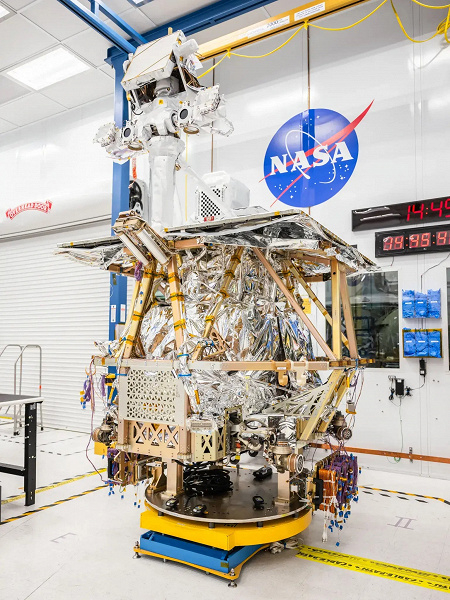Lunokhod will set off to study traces of water and resources at the South Pole of the Moon at the end of the year
NASA VIPER (Rover for In-Situ Polar Exploration of Volatiles) spacecraft received its «neck» and «head», which allowed him to stretch 2.4 meters. This final assembly means the rover is fully prepared for its upcoming lunar mission.
VIPER is expected to travel to the Moon's South Pole aboard Astrobotic's Griffin lunar lander later this year. It will be launched on a SpaceX Falcon Heavy rocket and will spend about 100 days on the lunar surface, examining traces of water ice and other volatile compounds.
The mission is designed to deepen our understanding of the distribution and composition of water on the Moon, as well as identify other potentially valuable resources in the little-explored region of the robot's lunar landing. If the mission goes according to plan, the rover should reach its destination by the end of the year at Mons Mouton near the South Pole of the Moon.
The data collected will help scientists better prepare for the conditions that future astronauts will face as part of NASA's Artemis program to return humans to the Moon.
The rover's design is optimized to overcome obstacles on the complex lunar terrain. VIPER will be able to bypass large boulders, descend into and out of craters, and also operate in conditions of periodic loss of communication. It has dual stereo cameras on board for navigation with a panoramic view of 400 degrees and a vertical tilt of up to 75 degrees, which will allow it to detect obstacles at a distance of up to 18 meters. And also a set of headlights — the first in history on a planetary rover — to illuminate the path and warn of dangerous objects. VIPER is equipped with two antennas to communicate with Earth at a distance of 384,000 km via NASA's Deep Space Network DSN.
Commands and data will be transmitted between the rover and the operations center at NASA's Ames Research Center in California via a network of Deep Space Communications Network antennas acting as an intermediate link.

